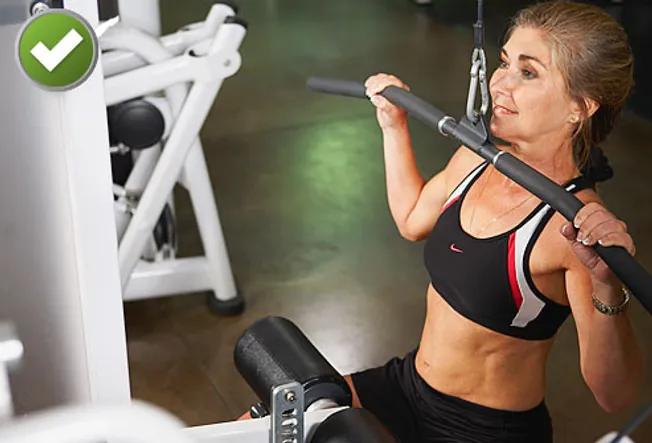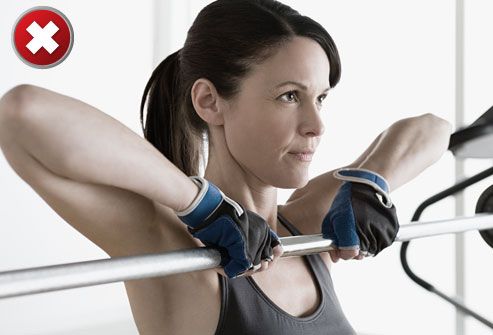Who has time to waste on ineffective, risky exercises? Not you. So ditch these nine moves that may not deliver the results you want — and may even cause injury.

#1: Lat Pull-down Behind the Head
The problem: Only people with very mobile shoulder joints can keep their spines straight enough to do this exercise properly. So the move — done wrong — can lead to shoulder impingement or worse, a tear in the rotator cuff. And if the bar hits the back of the neck, it could injure cervical vertebrae.A Safer Lat Pull-down
On the pull–down machine, lean back a few degrees, use a wider–than–shoulder grip, and bring the bar down in front of your body to the breastbone, pulling shoulder blades down and together. Contract your abdominals to stabilize the body, and avoid using momentum to swing the bar up and down. The lat pull–down works the muscles of the upper back.
#2: Military Press Behind the Head
This shoulder move, in which you lift weights or a barbell up and down behind the head, can cause the same problems as the lat pull–down behind the head.
A Safer Military Press
A safer shoulder alternative: When doing the military press, keep the bar or dumbbells in front of your head. Stand with the weight no lower than the collarbone and keep your upper body upright. The exercise can also be done seated. Always sit straight against a back support, and keep the natural curve in your spine, with upper back and glutes pressed to the chair.
#3: Upright Row
The problem: Pulling weights, a barbell, or a weighted cabled bar up under your chin is a big no-no because it can compress the nerves in the shoulder area, impinging the shoulder.

Safer Alternative to the Upright Row
Instead of doing an upright row, work your shoulders with a front or lateral shoulder raise, lifting weights out to the front or side of the body.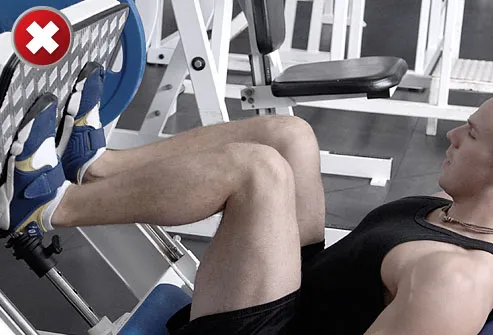
#4: Lying Leg Press with Knees Bent Too Deeply
From a reclining position, you push the plate up and bring it down in this common exercise to work the quadriceps, hamstrings, and glutes. The problem comes when you bend your legs too far -- past a 90-degree angle -- which can hurt your back and knees.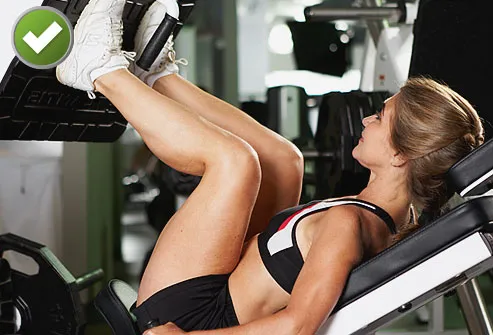
Leg Press: Safer Moves
If you want to do a lying leg press, keep your butt from rotating off the back of the machine, and don't bend past 90 degrees at the knee.
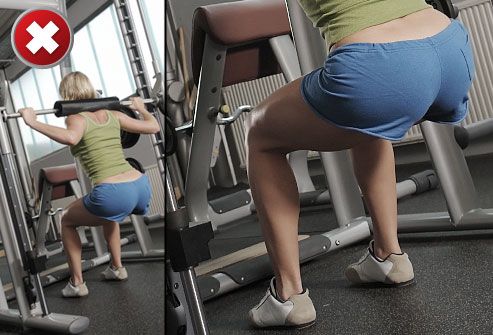
#5: Squats on the Smith Machine
The problem: The bar on the machine doesn't give, which can force the body into risky positions. Plus, people tend to put their feet farther in front of their bodies when doing squats on the machine, which makes matters worse.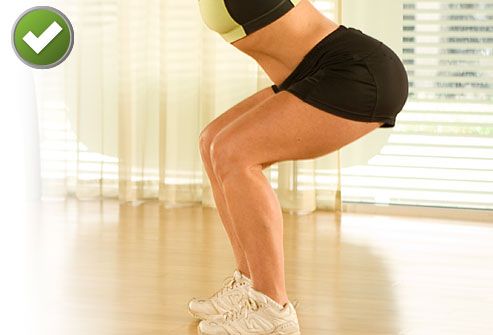
Squats: A Safer Alternative
It's not necessary to use weights when doing a squat, but if you keep good form, adding weight will intensify the move. Standing straight with your feet shoulder-width apart, slowly lower your body, back straight. Move the hips back as if you are going to sit in a chair. Try to maintain your weight directly over your feet, keeping heels on the floor. Lower yourself to about a 90 degree bend in the knee. Slowly return to a standing position.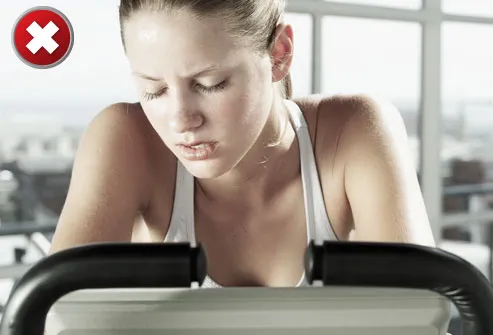
#6: Using Bad Form on Cardio Machines
The problem: Hunching over or using a death-grip on the handrail cheats your body and can throw off your alignment, jarring your spine, shoulders, and elbows.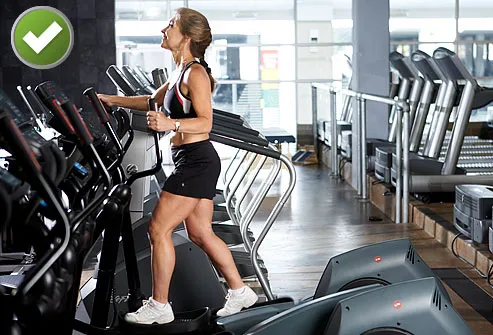
Better Technique on Cardio Machines
Don't set the incline or resistance so high that it causes you to hang on to the machine too tightly. Use a natural gait with a light grip. For a more challenging workout, hold on lightly with one hand and move the other arm, switching arms periodically. And save the reading for after your workout so you can focus on good form.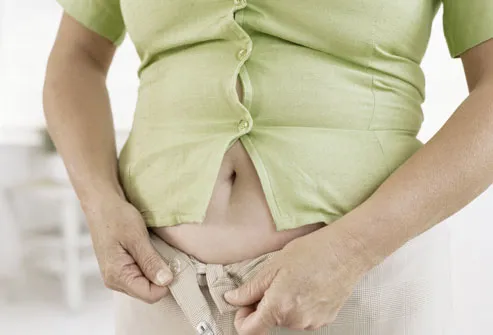
#7: Exercises Done with Goal of Spot Reduction
People who do strengthening and toning exercises in an effort to trim fat from a certain area — thighs, hips, stomach, or arms — have the wrong idea. Although these exercises can help firm muscles, if the targeted area still carries an extra layer of fat, it won't look much different. You can't isolate fat loss to one part of the body.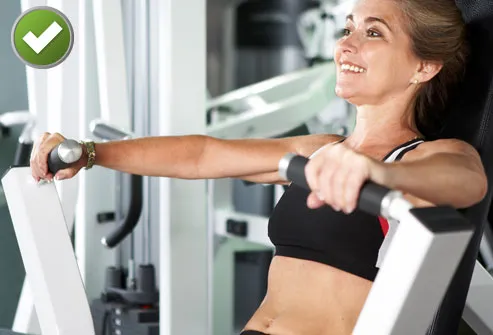
Effective Ways to Reshape Your Body
Cardiovascular exercise will torch calories, but resistance training is a big part of the equation if you want to burn fat. Boosting your muscle mass increases your metabolism, so you burn more calories all the time, even when you're not working out.
# 8: Always Lifting with a Weight Belt
The problem: Too many people wear weight belts too often. Unless you have a back injury or other medical reason — or are lifting a lot of weight — the weight belt may let your core muscles slack off — and you need your core muscles all the time in everyday life.The solution: Back off the weight belt unless it's necessary.
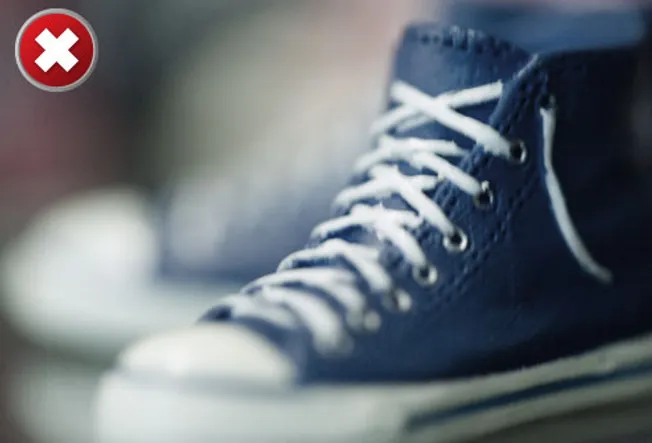
#9: Any Exercise Done Wearing the Wrong Shoes
Even if you're doing everything else right, your efforts can be undermined by improper footwear. Working out with the wrong shoes increases pounding on the joints, and can lead to injuries like plantar fasciitis or tendinitis.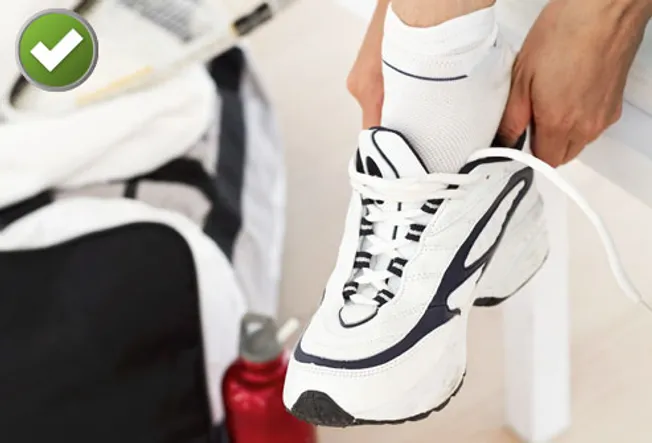
Shoe Solution
The key, experts say, is to choose a shoe that is specific to your activity and that suits your particular foot. They recommend shopping at stores specializing in athletic shoes, where you can seek advice from a knowledgeable salesperson. And don't forget to replace your shoes when they show signs of wear.At Coffs Coast Health Club we are advocates of healthy fitness practices. If you ever have any questions or feedback we are hear to listen.
The above information comes was sourced from http://www.webmd.com.
Visit their website for all things more information about health issues.
